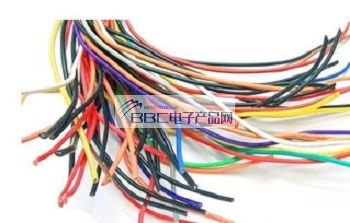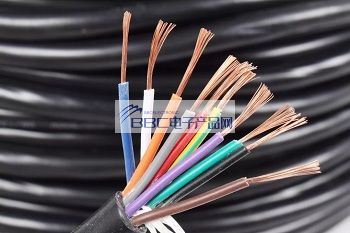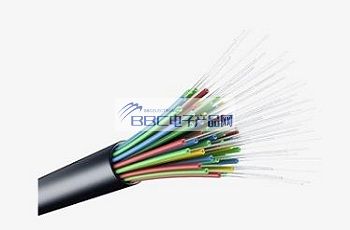Categorization:Product Information
First, the difference between wire and cable In fact, "wire" and "cable" is not a strict boundary. Usually a small number of cores, small diameter products, simple structure of the product known as wire, no insulation known as bare wire, otherwise known as cable; conductor cross-sectional area of a larger (greater than 6 square millimeters) known as large wire, smaller (less than or equal to 6 square millimeters) known as a small wire, insulated wire is also known as cloth wire. This is simpler and easier to understand!!!! Cables generally have more than 2 layers of insulation, most are multi-core structure, wound on the cable tray, the length is generally greater than 100 meters. Wire is generally a single layer of insulation, single-core, 100 meters on a reel, wireless disk. Wire is composed of one or several soft wires, wrapped in a light and soft outer sheath; cable is composed of one or several insulated wrapped wires, and then wrapped in a tough outer layer made of metal or rubber. Cables and wires are generally composed of three components: the core wire, the insulating envelope and the protective sheath. But with the expansion of the scope of use, many varieties of "cable in the line", "cable in the line". So there is no need to strictly differentiate. In the daily custom, people call the household cloth wire wire, the power cable referred to as cable. Wire and cable mainly includes bare wire, winding line, power cables, communication cables and fiber optic cables, electrical equipment.

Second, the difference between cable and fiber optic cable cable: its size, weight, communication capacity is poor, can only be used for short-distance communication. Fiber optic cable: its size, weight is small, low cost, communication capacity, communication ability and other advantages. Their differences: inside the cable is a copper core wire; inside the fiber optic cable is a glass fiber. Communication cable is a certain number of optical fibers in accordance with a certain way to form a cable core, outsourced with a jacket, and some are also wrapped with an outer jacket, to achieve optical signal transmission of a communication line. Has been in Shanghai, Beijing, Wuhan and other places to carry out field tests. Soon after the municipal telephone network as a trunk line between the trial, after 1984, gradually used for long-distance lines, and began to use single-mode optical fiber. Communication fiber optic cable has a greater transmission capacity than copper cable, relay section of the long distance, small size, light weight, no electromagnetic interference, since 1976 has been developed into a long-distance trunk lines, intra-city trunking, offshore and inter-oceanic submarine communications, as well as local area networks (LANs), private networks, such as the backbone of the wired transmission lines, and began to the city of the field of the user loop wiring network to the field of development, for the fiber-to-the-home, wide generation of integrated business digital network transmission lines. Line. Cable is usually made of several or several groups of wires [each group of at least two] stranded into a rope-like cable, each group of wires insulated from each other, and often twisted around a center, the entire outer cover with a highly insulating cover; specifically submarine cables: the difference in material. Cable to metal material (mostly copper, aluminum) for the conductor; fiber optic cable to glass fiber for the conductor. Second: there is a difference in the transmission signal. Cable transmission is an electrical signal. Fiber optic cable transmits optical signals. Third: there is a difference in the scope of application. Cable is now used for energy transmission and low-end data transmission (such as telephone). Fiber optic cables are mostly used for data transmission

Third, the difference between cable and fiber optics Cable, generally considered to be a cable is made of one or more mutually insulated conductors with outer insulation and protective layer, the power or information from one place to another wire transmission. Broadly speaking, it refers to a device that uses metal as a medium to transmit electrical signals. By definition, cables are used to conduct electricity. Optical fiber, short for optical fiber, is a fiber made of glass or plastic that serves as a light conducting tool. The principle of transmission is 'total reflection of light'. Often the terms optical fiber and fiber optic cable are confused. Most optical fibers must be wrapped by several layers of protective structures before they can be used, and the wrapped cable is known as a fiber optic cable. The protective and insulating layers on the outer layer of the optical fiber prevent the surrounding environment from harming the fiber, such as water, fire, and electric shock. Fiber optic cable is divided into: cable skin, aramid filament, buffer layer and optical fiber. Optical fibers are similar to coaxial cables, except that they do not have a mesh shield. At the center is the glass core through which the light travels.
 -4、About BBC Electronic Products Network platform related to the introduction and sales of products briefly: BBC Electronic Products Network - a professional agent / production / sales of a variety of {connectors | wiring harness | wire and cable products}; if you have a related [connectors | wiring harness | wire and cable products] purchasing / sourcing needs or would like to buy / to understand which connectors | wiring harness | wire and cable products we can provide solutions, please contact the following Division Division I business personnel! If you have related [connector | wire harness | wire and cable production] sales / resources and promotion needs, please click on the "¡¡ Business Cooperation ←" with the person to discuss!
-4、About BBC Electronic Products Network platform related to the introduction and sales of products briefly: BBC Electronic Products Network - a professional agent / production / sales of a variety of {connectors | wiring harness | wire and cable products}; if you have a related [connectors | wiring harness | wire and cable products] purchasing / sourcing needs or would like to buy / to understand which connectors | wiring harness | wire and cable products we can provide solutions, please contact the following Division Division I business personnel! If you have related [connector | wire harness | wire and cable production] sales / resources and promotion needs, please click on the "¡¡ Business Cooperation ←" with the person to discuss!